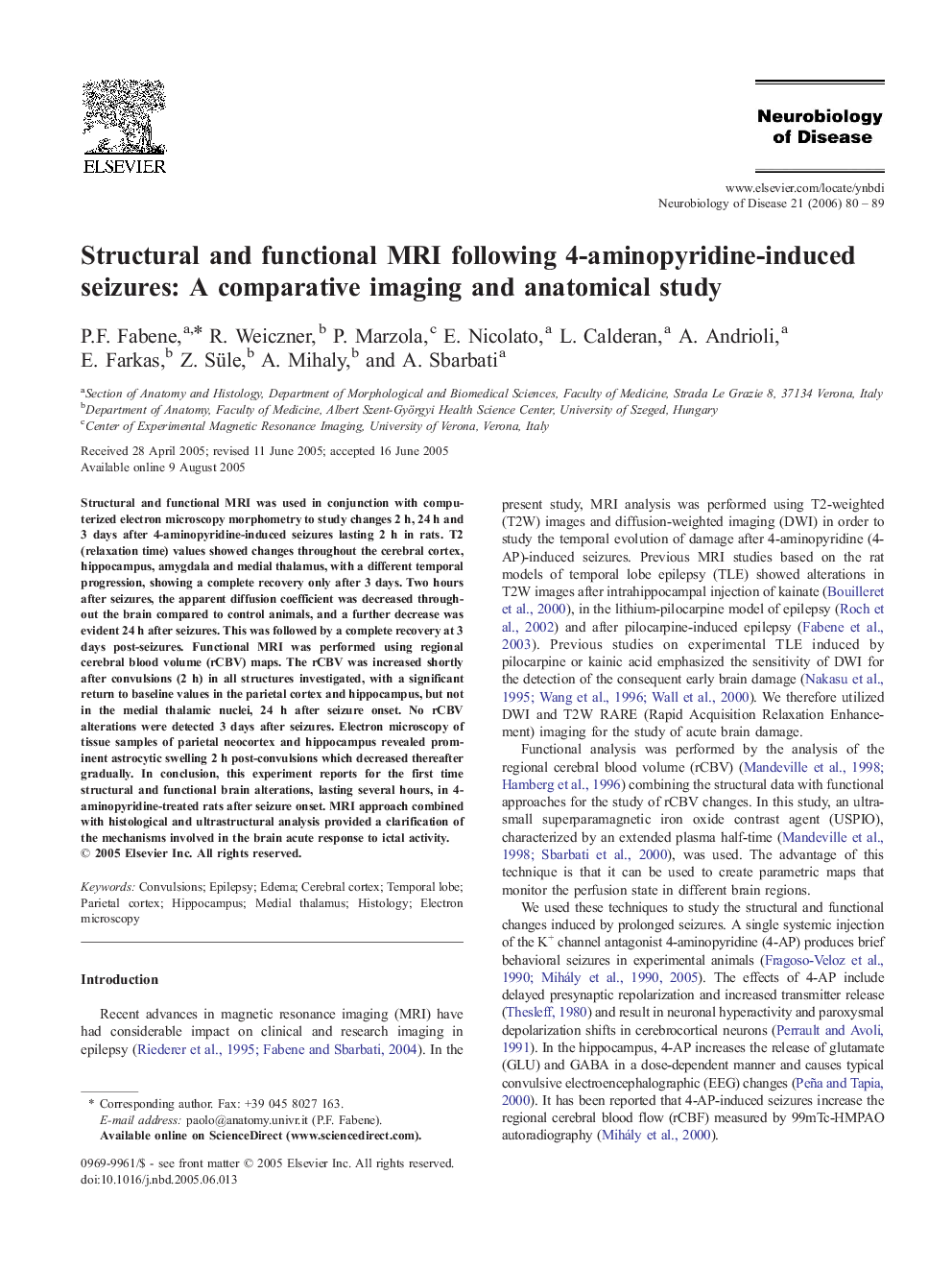| Article ID | Journal | Published Year | Pages | File Type |
|---|---|---|---|---|
| 3071118 | Neurobiology of Disease | 2006 | 10 Pages |
Structural and functional MRI was used in conjunction with computerized electron microscopy morphometry to study changes 2 h, 24 h and 3 days after 4-aminopyridine-induced seizures lasting 2 h in rats. T2 (relaxation time) values showed changes throughout the cerebral cortex, hippocampus, amygdala and medial thalamus, with a different temporal progression, showing a complete recovery only after 3 days. Two hours after seizures, the apparent diffusion coefficient was decreased throughout the brain compared to control animals, and a further decrease was evident 24 h after seizures. This was followed by a complete recovery at 3 days post-seizures. Functional MRI was performed using regional cerebral blood volume (rCBV) maps. The rCBV was increased shortly after convulsions (2 h) in all structures investigated, with a significant return to baseline values in the parietal cortex and hippocampus, but not in the medial thalamic nuclei, 24 h after seizure onset. No rCBV alterations were detected 3 days after seizures. Electron microscopy of tissue samples of parietal neocortex and hippocampus revealed prominent astrocytic swelling 2 h post-convulsions which decreased thereafter gradually. In conclusion, this experiment reports for the first time structural and functional brain alterations, lasting several hours, in 4-aminopyridine-treated rats after seizure onset. MRI approach combined with histological and ultrastructural analysis provided a clarification of the mechanisms involved in the brain acute response to ictal activity.
